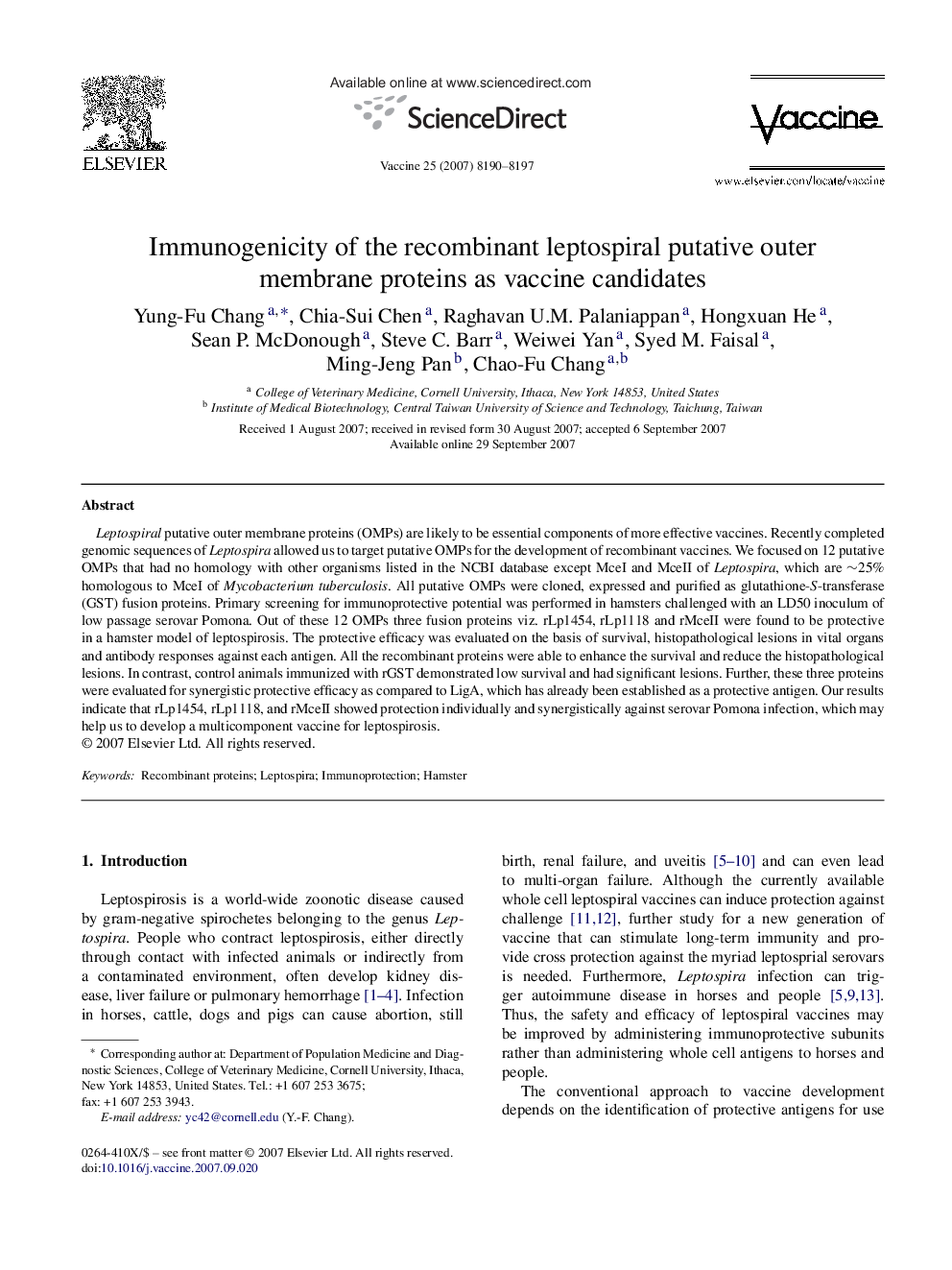| Article ID | Journal | Published Year | Pages | File Type |
|---|---|---|---|---|
| 10970511 | Vaccine | 2007 | 8 Pages |
Abstract
Leptospiral putative outer membrane proteins (OMPs) are likely to be essential components of more effective vaccines. Recently completed genomic sequences of Leptospira allowed us to target putative OMPs for the development of recombinant vaccines. We focused on 12 putative OMPs that had no homology with other organisms listed in the NCBI database except MceI and MceII of Leptospira, which are â¼25% homologous to MceI of Mycobacterium tuberculosis. All putative OMPs were cloned, expressed and purified as glutathione-S-transferase (GST) fusion proteins. Primary screening for immunoprotective potential was performed in hamsters challenged with an LD50 inoculum of low passage serovar Pomona. Out of these 12 OMPs three fusion proteins viz. rLp1454, rLp1118 and rMceII were found to be protective in a hamster model of leptospirosis. The protective efficacy was evaluated on the basis of survival, histopathological lesions in vital organs and antibody responses against each antigen. All the recombinant proteins were able to enhance the survival and reduce the histopathological lesions. In contrast, control animals immunized with rGST demonstrated low survival and had significant lesions. Further, these three proteins were evaluated for synergistic protective efficacy as compared to LigA, which has already been established as a protective antigen. Our results indicate that rLp1454, rLp1118, and rMceII showed protection individually and synergistically against serovar Pomona infection, which may help us to develop a multicomponent vaccine for leptospirosis.
Related Topics
Life Sciences
Immunology and Microbiology
Immunology
Authors
Yung-Fu Chang, Chia-Sui Chen, Raghavan U.M. Palaniappan, Hongxuan He, Sean P. McDonough, Steve C. Barr, Weiwei Yan, Syed M. Faisal, Ming-Jeng Pan, Chao-Fu Chang,
